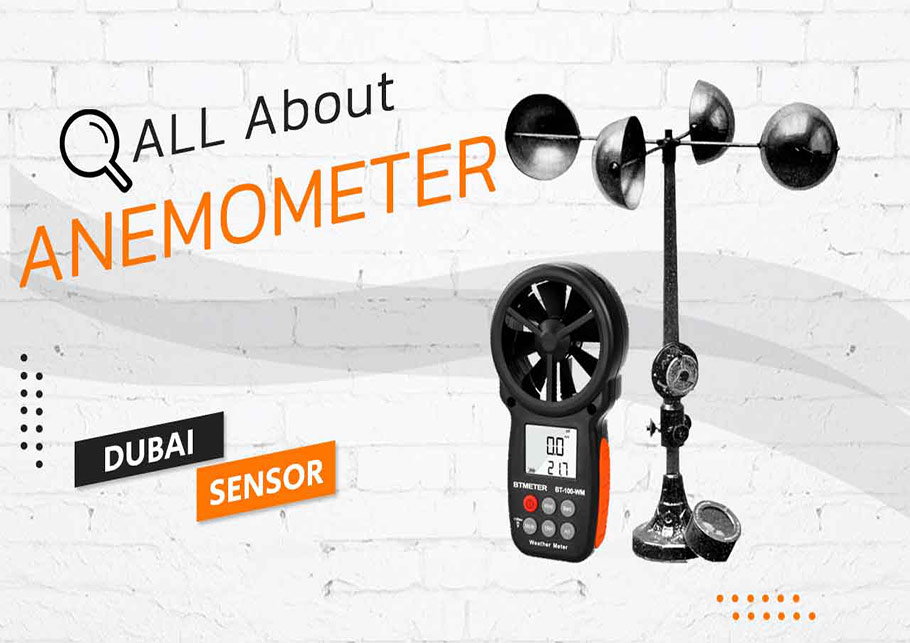Leading Features to Look for in an Efficient Anemometer for Accurate Wind Dimension
Leading Features to Look for in an Efficient Anemometer for Accurate Wind Dimension
Blog Article
All You Need to Know Concerning Anemometers: Just How They Function, Why They Matter, and Where to Use Them
Anemometers, though typically neglected in the world of clinical tools, play a critical role in numerous fields, using important understandings right into wind rate and air flow patterns. As we dig right into the intricacies of anemometer innovation, we will certainly reveal the inner workings of these gadgets, their value, and the vital considerations when selecting the best anemometer for certain applications.

Anemometer Essentials
A necessary tool utilized to measure wind speed and instructions, the anemometer plays a critical function in meteorology and numerous markets. An anemometer usually consists of 3 or 4 mugs that rotate in the wind, a vane that aims into the wind, and sensing units to track the turnings or activities.
There are numerous sorts of anemometers offered, consisting of mug anemometers, vane anemometers, hot-wire anemometers, and sonic anemometers, each with its distinct functions and applications. Mug anemometers are commonly utilized for fundamental wind rate measurements, while vane anemometers are chosen for directional dimensions. Hot-wire anemometers are suitable for reduced airspeeds, and sonic anemometers are excellent for high-precision measurements in research and commercial setups. Understanding the fundamentals of anemometers is necessary for exact wind information collection and evaluation throughout various industries.
Principles of Anemometer Operation
Structure on the foundational understanding of anemometer fundamentals, the concepts of anemometer procedure elucidate the auto mechanics behind wind rate and direction dimensions. Anemometers run on the principle of air flow impacting a sensing unit, triggering it to rotate. Mug anemometers, as an example, have 3 or more cups that capture the wind, triggering them to spin quicker as the wind speed boosts. The rotation speed is then exchanged a wind speed measurement. Vane anemometers, on the various other hand, use a tail or a probe that aligns itself with the wind direction, supplying a dimension of wind instructions based on the positioning of the sensing unit. Hot-wire anemometers rely upon a heated cable that cools down as wind passes over it, with the rate of cooling identifying the wind speed. Ultrasonic anemometers step wind speed and direction by examining the moment it takes for ultrasonic signals to travel between transducers. Recognizing these principles is crucial for trustworthy and exact wind dimensions in various applications.
Relevance of Anemometers
The value of anemometers in meteorology and various sectors can not be overstated. Anemometers play a crucial duty in gauging wind rate and direction, providing essential information for climate projecting, climate researches, ecological monitoring, and aeronautics procedures. Meteorologists rely upon anemometers to gather accurate wind information, helping them comprehend weather patterns, anticipate storms, and problem timely warnings to the general public. In markets such as building and construction, farming, eco-friendly power, and maritime operations, anemometers are made use of to enhance processes, make sure safety, and raise effectiveness. Wind ranch drivers make use of anemometers to assess wind problems and make best use of electricity manufacturing from wind turbines. In the maritime sector, anemometers help ship navigating by giving real-time wind information to captains, helping them make educated choices to make sure secure trips. Overall, anemometers are vital devices that add considerably to security, effectiveness, and educated decision-making in weather forecasting and a wide variety of industries.
Applications Throughout Numerous Industries
In the sustainable power market, anemometers play an important function in analyzing wind problems for wind farm placements, making sure optimum power production. Industries like building and mining make use of anemometers to check wind speeds, critical for safety protocols, especially when working at elevations or in open-pit mines where solid winds More hints can pose hazards. In agriculture, anemometers assist farmers in managing plant splashing by giving real-time information on wind rate to stay clear of drift.

Choosing the Right Anemometer for Your Demands
Choosing the suitable anemometer customized to your details requirements is crucial for obtaining precise wind speed and instructions dimensions. When picking an anemometer, take into consideration elements such as the designated application, needed dimension range, environmental conditions, and preferred attributes. For general functions, a cup anemometer is appropriate for gauging wind rate, while a vane anemometer supplies wind direction data. Hot-wire anemometers are excellent for reduced airspeed measurements, and ultrasonic anemometers provide high accuracy and longevity.

Verdict
Finally, anemometers play a crucial function in gauging wind rate and instructions across different markets. Recognizing the principles of anemometer operation is crucial for selecting the right tool for details demands. From meteorology to aviation, anemometers are crucial tools for collecting exact information and making sure safety in various applications. When choosing the most ideal device for measuring wind conditions., it is vital to think about the value of anemometers in order to make informed decisions.
There are different kinds of anemometers offered, including cup anemometers, vane anemometers, hot-wire anemometers, and sonic anemometers, each with its one-of-a-kind features and applications. Cup anemometers are generally utilized for basic wind rate dimensions, while vane anemometers are preferred for directional dimensions. Hot-wire anemometers are suitable for low airspeeds, and sonic anemometers are suitable for high-precision dimensions in study and commercial setups.Structure on the fundamental understanding of anemometer basics, the principles of anemometer operation elucidate the mechanics behind wind speed and direction dimensions. For basic purposes, a cup anemometer is appropriate for determining wind speed, while a vane anemometer provides wind direction information.
Report this page